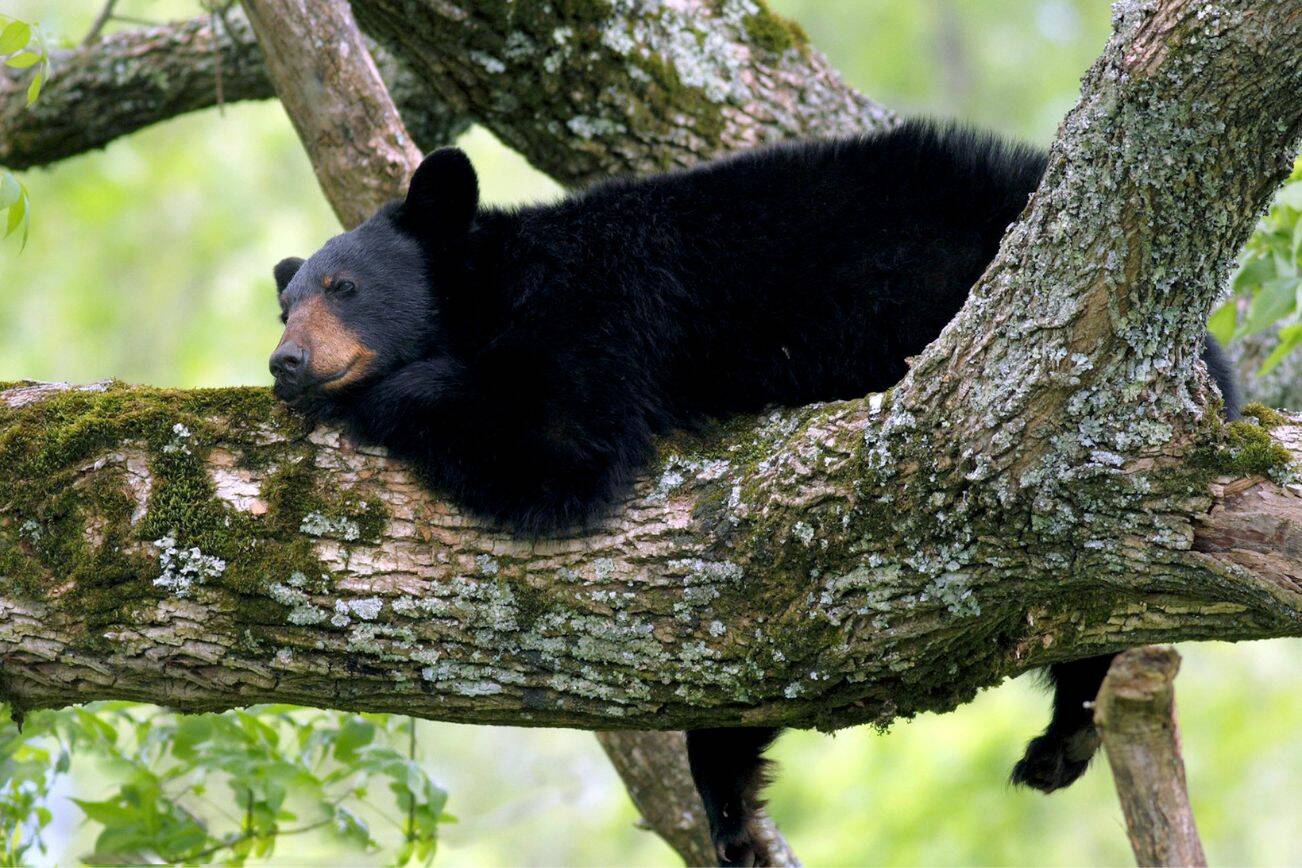Hungry black bears have been getting into trouble in the Mt. Baker-Snoqualmie National Forest.
Following an increase in sightings and human-bear interactions, the U.S. Forest Service has issued new food storage rules for the area. The agency had to close camping around Middle Fork Campground last year due to bears doing what bears do best — eat.
The problem? Too much exposure to human food. As some bears have gotten into tents, coolers and cars, they become accustomed to human food and continue to seek it out.
Those bears are moved to new locations, if possible. If they keep returning for human food following a relocation, they are typically euthanized. The state Department of Fish and Wildlife receives about 500 complaints annually about bears.
A black bear in the Mt. Baker-Snoqualmie National Forest had to be killed last year after a relocation, which helped prompt the new rules.
“That’s a bad situation,” said Kurt Aluzas, a local Forest Service wildlife biologist. “When that happened, that’s something that really made us realize that we’ve got to look at these issues a lot harder … we need to be proactive and ahead of it. We’re trying to get on top of it through education and through installing bear-resistant containers and other things to keep it from getting to that point.”
Preventing negative human-wildlife interactions nearly always comes back to food and other animal attractants. Bears are notoriously protective of food sources, which is why it is not advised to unnecessarily linger around an animal carcass in areas where the creatures are active.
Eating garbage is easier for bears than finding a berry patch or hunting game. It’s the same concept as reaching for a bag of chips instead of cooking supper.
Human food is not the only thing that attracts wildlife. Animal feed is often the target of bear raids and even hygiene products can be attractants.
The bears — along with other wildlife — will smell Doritos and deodorant a long ways off.
They’ve got the nose of a bloodhound, maybe seven times that of a bloodhound,” said Brian McNeil, a Forest Service public service manager. “They look in your car, they see a box, they understand, they smell. Regardless if you have it packaged up and sealed, they are masters, they will break windows just to investigate.”
That’s why it is important to make sure any consumable brought to areas where bears are present should be sealed. Per the regulations, “acceptably stored” means inside a bear-proof container certified through the Grizzly Bear Committee Courtesy Inspection Program. There are other options, including suspending attractants in a bear bag at least 10 feet off the ground and 4 feet horizontally from any supporting tree or pole.
Bear attractants can also be stored inside a fully inaccessible compartment in a locked and closed vehicle.
For example, it would be acceptable to toss food in a closed and locked trunk of a car. However, it is against regulations to put food in the back seat of the car without it being in a bear-resistant container. Bears can break vehicle windows and open unlocked doors.
Properly disposing of trash is important. In the backcountry, never bury or burn trash — always pack it out in a bear barrel. If camping in a modern site, trash should be disposed of in bear-resistant refuse cans or dumpsters.
This is important as wildlife other than bears consume human treats. Crows, ravens and other nest predators can hurt the populations of less common birds while thriving off scavenging trash. Feeding wildlife can have unintended consequences.
“If you’re subsidizing them in a localized area near a campground, and when you’ve got endangered or threatened species nearby, or just other species of interest, the crows and ravens going and feeding starts to have ripple effects on other species,” Aluzas said.
For hunters and anglers, little changes outside of codifying good backcountry etiquette. Harvested game animals must be acceptably stored unless being dressed or prepared for eating. Additionally, field dressing and gutting sites should be a half-mile from sleeping areas.
McNeil mentioned that if hunters do hit something near a trail or dispersed campsite, they do their best to move the kill at least 100 yards.
All food and refuse must be acceptably stored or acceptably possessed during daytime hours.
All food and refuse must be acceptably stored during nighttime hours, unless it is being prepared for eating, being eaten, being transported, or being prepared for acceptable storage.
Any harvested animal carcass must be acceptably stored, unless the carcass is being field dressed, transported, being prepared for eating, or being prepared for acceptable storage.
Burnable attractants that cannot be completely consumed by fire (i.e., no post burning residue) must be packed out.
All of the above are in effect for all National Forest System lands within the Mt. Baker Snoqualmie National Forest.


